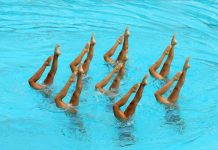Most boys, during their young years, tend to want to learn more about Karate in order to defend themselves. In fact, traditional Karate is a highly popular form of martial arts due to its presence in film and TV across the world.
If you have ever been interested in the art of karate, there’s a lot that you need to learn and the internet is a good place to start.
In this guide, we will take a look at the history of traditional Karate, where it came from, and how it was practiced in the past. You can also find out more about the core lessons of Karate below.

About Traditional Karate
This art form is all about self-defense, with core life lessons thrown in. It has been known to instill discipline to those who practice.
Traditional Karate isn’t a form of fighting that you would really use outside the classroom. It is designed to celebrate movement and is also an excellent way to stay fit.
History
Traditional Karate is rooted in the “Tode” style of defense, which, in essence, means that this is a weaponless self-defense system. This system was originally invented in Okinawa and the main influence was from Chinese martial arts.
It is widely rumored that this type of martial arts was first practiced in India some two thousand years ago. The beginning of traditional Karate started in 1933 when it was finally recognized by the Japanese Martial Arts Committee.
Until 1935, Karate was written in Chinese. The masters of the Okinawa Karate martial arts conferred and decided to give the art a new name. It was then practiced in three Okinawa cities, Shuri, Toman, and Naha, before moving across the world.
Styles of the Traditional Karate
There are four different styles that you can learn as part of your journey in traditional Karate.
Goju-Ryu
The first style that you get to learn about focuses on formidable counter-attack strategies.
The movements are the ones that give you a chance to launch an attack after you evade the attacks that are thrown at you. The defensive positions that you take with this style more or less resemble jujitsu.
You also have to use breathing power, coupled by a number of stances that can offer soft and hard techniques. The technique used here is what makes it possible to tell the difference between the various Karate styles.
Wado-Ryu
This is the off-shoot to the Shotokan-Ryu, that you’ll read about below. This style is all about movements and harmony. This is a spiritual form of traditional Karate that was formed was back in 1939 by Hienori Otsuka.
The idea for forming this style was to teach the students to use less of their bodies in order to evade attacks.
You can easily spot this form of Karate as it uses shorter stances and is very fluid.
Shotokan-Ryu
Gichin Funakoshi himself created this style of Karate and named it after a pen name that he used to write poetry with. He established the style after he moved to Tokyo, in mainland Japan, after years of studying in Okinawa. The idea was to be quick when you perform this style.
Gichin thought that it was only right to have quicker strikes when you defend yourself. The idea was so that in the case of a confrontation with a superior opponent, speed would count. Quick attacks will give the opponent less time to regroup and launch another attack.
This is by far the most popular style that has been in use in Karate since it was created. The style teaches efficient use of hands, elbows, knees, and feet.
Shito-Ryu
The last style on our list is Shito-Ryu, which is basically about accuracy. The style was created in the year 1928 by Kenwa Mabuni to land accurate blows to the opponent.
The students were taught that landing blows is good but landing accurate blows on the opponent is much better.
This style of Karate requires the student to have the strength to perform the attacks used in competitions.
Core Principles of Traditional Karate
There are quite a number of principles that are associated with the art of traditional Karate. Gichin stated that the ideas of Karate don’t lie in the victory or defeat, but with the perfection of character.
Some of the cores principles and ideologies are that there is no first strike in Karate, know yourself first, Karate stands on the side of justice, and mentality over technique.
Karate is a life-long pursuit that requires you to be constantly mindful, diligent and resourceful.

Conclusion
Karate is one of the most disciplined art forms that you can ever engage with. If you are interested in learning more about Karate, be sure to research this discipline and its core values.







